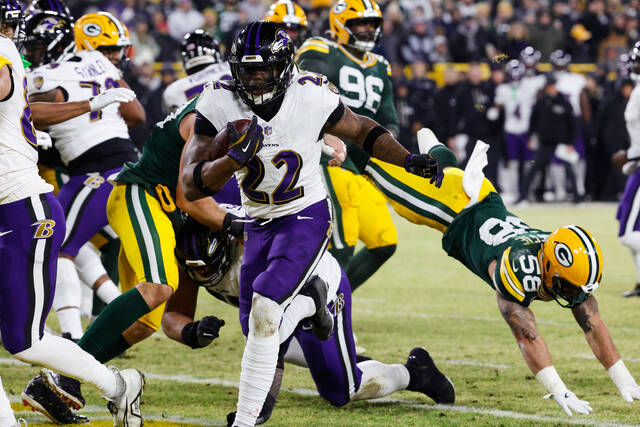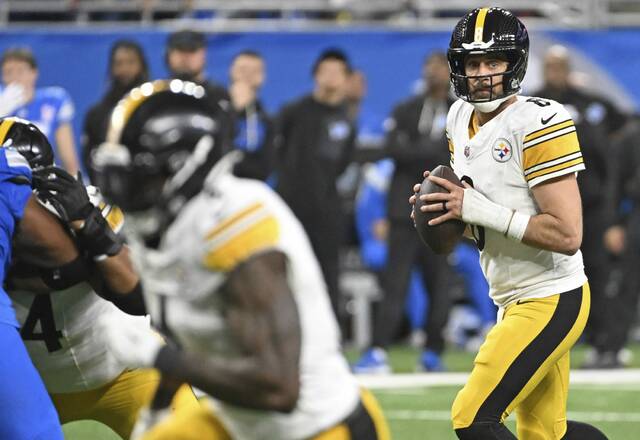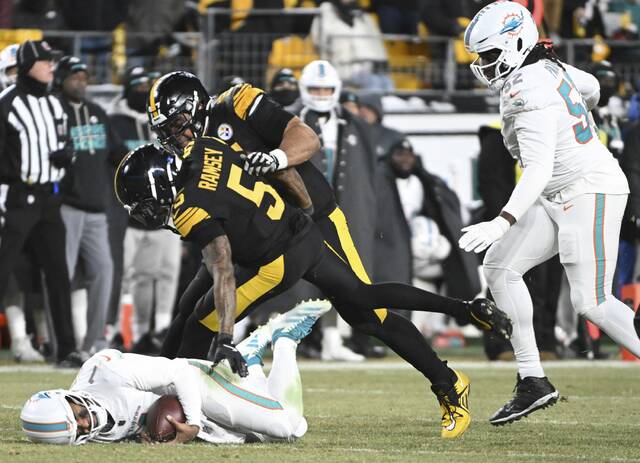On the first day of Pittsburgh Steelers training camp, head coach Mike Tomlin gave an in-depth breakdown of how the slot position has changed for wide receivers over the years.
“Years ago, there was a designated slot guy,” Tomlin said at Saint Vincent College. “And that was the only guy who played in there. At the early stages of my career here, very rarely did you ever see anyone play in there besides Hines Ward. In today’s game, based on schematics and matchups, you see people moving in and out of the slot position all the time.”
He’s got a similar view of what’s happening on the other side of the ball with how slot defenders/nickelbacks are evolving. It’s no longer just about putting your shortest, shiftiest cornerback opposite the opponent’s receiver with the same description.
“Arthur Maulet and Karl Joseph were working as run-down nickels. Guys like Cam Sutton and Tre Norwood are pass-down sub-package players. There is big-time specialization,” Tomlin said Thursday. “There are big nickel packages. (Miles) Killebrew plays in big nickel versus two-tight end personnel groups. It’s a component or evolution of the game. If something is going on on one side of the ball, it is reasonable to expect that there is a mirrored development on the other side of the ball.”
The Steelers personify that. In fact, they did a lot to popularize the “run nickel” concept by featuring Mike Hilton in that role for four years. Then he signed a four-year, $24 million contract with the division rival Cincinnati Bengals after the 2020 campaign.
The Steelers kept Sutton and drafted Norwood because of their abilities to play various roles in the secondary. We are learning now that was probably part of the appeal of signing Damontae Kazee too. And Edmunds’ capability to play a quasi-linebacker in nickel and dime situations is already paying off and may have been part of the team’s thinking as to why they brought him back from free agency this offseason.
“It gives you some flexibility against teams that have two tight ends or that have a (Pat) Freiermuth-type guy,” defensive coordinator Teryl Austin said of using the extra safety as a linebacker. “They’ll move (the tight end) out and make it look like three receivers. Or they’ll put him in, and now it becomes a running game, and you don’t want to get caught with a smaller nickel outside. Or, with the big group, now you have an outside linebacker moving out to have to guard.”
Sutton’s ability to play cornerback outside, in the slot or even free safety resonated with the team from the moment he arrived out of Tennessee in the third round of the 2017 draft. Now, though, he’s one of many whose clearly defined role is to play as many roles as possible.
“The biggest thing is the schematics, creating those matchups,” Sutton said last week. “Whether it’s bigger body pieces or getting a smaller guy on a bigger guy. Just the ebb and flow of the game. Wanting to put your team down-in and down-out in the right situations.”
The rough delineation of duties for the Steelers appears to be that Sutton and Ahkello Witherspoon can be the two corners on the field when the Steelers are in their base 3-4, with Edmunds and All-Pro Minkah Fitzpatrick starting at the safety positions.
As Tomlin pointed out, Sutton can then go in the slot. Newly signed free agent Levi Wallace can then enter the fray as the other outside corner. Or, if they want more of a run-stuffing presence, Maulet or Killebrew can play inside, and Sutton can stay outside. And at any point, Kazee can come in as a fifth or sixth defensive back, thus allowing Edmunds to play at the second level as the de facto linebacker.
Meanwhile, Norwood can basically be a special teamer and injury replacement for all of these jobs.
All that will hopefully free up Fitzpatrick to either turn the deep middle into a no-fly zone or allow him to be dotted in various spots around the field. The goal is that Fitzpatrick can regenerate the takeaway magic he flashed upon arriving in Pittsburgh in September 2019 but seems to have lost as the past two seasons dragged along. No doubt that problem is partially due to Fitzpatrick being employed as an emergency run defender far too often.
“It gives us more options on a week-in, week-out basis,” Sutton said of the changing parts in the secondary. “Guys are in and out for different schemes. Giving different teams different looks. That keeps us as a moving target.”
That all sounds good. But are there enough stud players within the group? Aside from Fitzpatrick, are the rest of the defensive backs simply average players who do a lot of things pretty well but aren’t dominant in any specific talent?
Austin doesn’t consider the widespread deployment of DBs as a case of bench guys getting snaps for the sake of variety. Rather, he sees starting-caliber players getting reps they deserve.
“We look at anybody that has to come in like starters. When they get on the field, they have to play like starters. We feel very comfortable in that world, in terms of multiple packages, (and) multiple guys on the field.”
One of Tomlin’s favorite phrases is “nameless gray faces.” It’s his way to downplay the variable of who is wearing the opposing uniforms in a given week while encouraging his own team to focus on their individual business.
Aside from Fitzpatrick, the Steelers secondary may be a bunch of nameless gray faces to the rest of the league right now. Not only who they are, but where they play.
For Tomlin and Austin, that may be part of the plan. And if the plan is executed as it is designed, the lack of recognition shouldn’t be a concern.









